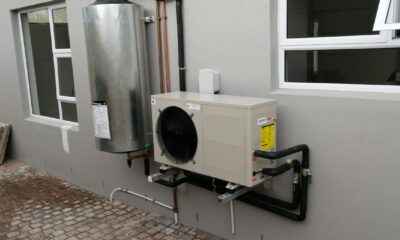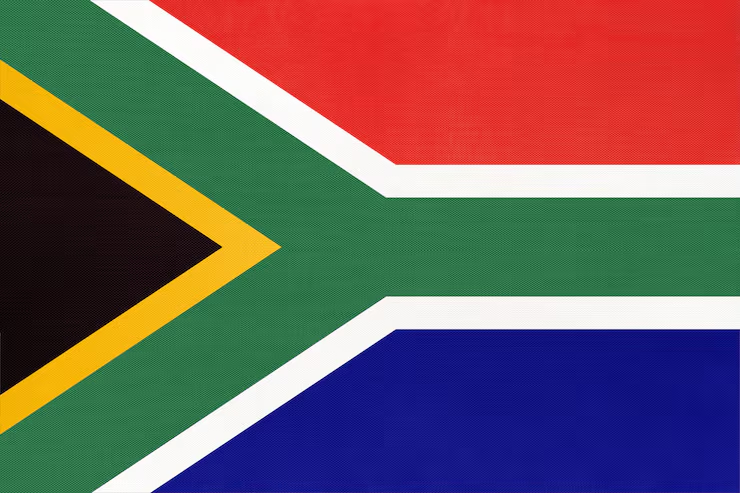News
Eskom’s Vicious Spiral: Why South Africa’s Power Giant Is Running Out of Charge

Soaring prices, vanishing customers and a mountain of debt are dragging Eskom and the country into deeper crisis.
Eskom, once South Africa’s most crucial state utility and a source of pride for its vast energy infrastructure, now stands as a cautionary tale of what happens when bad management, weak governance and unrelenting debt collide. The numbers are stark, the fallout is widespread and the time left to fix it is quickly running out.
The Organisation for Economic Cooperation and Development (OECD), in its latest economic survey of South Africa, didn’t mince words: Eskom is a danger to the country’s economic recovery. And it’s not just about the blackouts. The deeper issue? Eskom’s business model is broken, and no one seems sure how to fix it.
A Decade of Decline
Eskom’s sales have plummeted by 15% over the past ten years. The drop isn’t just a blip, it’s structural. In the rail sector, for example, vandalism and Eskom’s inability to guarantee supply pushed Transnet to switch to diesel locomotives. At the household level, load-shedding and unaffordable price hikes have driven a solar boom in suburbs and small towns alike.
From 2014 to 2024, residential electricity sales fell by more than 20%. Industrial demand, once the utility’s golden goose, has followed a similar trajectory, with large users increasingly tapping private or renewable energy options.
Tariffs Go Up, Customers Go Down
Here’s where things get toxic. As Eskom’s customer base shrinks, it has to charge more per unit of electricity to cover ballooning operational and debt-servicing costs. That means customers already fed up with erratic supply face steep increases and start unplugging further from the grid.
Electricity prices have skyrocketed almost tenfold since 2000, rising far faster than inflation. The sharpest increases came after 2009, but even then, the rates still weren’t enough to cover the actual cost of producing power, a legacy of decades-long underpricing.
It’s a vicious cycle: higher tariffs lead to lower demand, lower demand leads to even higher tariffs. And all the while, Eskom is sinking deeper into the red.
Debt: The Hidden Enemy
Today, Eskom’s debt burden accounts for 15% of total government debt, and it represents a staggering 8% of South Africa’s entire GDP. That’s not just unsustainable, it’s a national emergency.
Two mega-projects, Medupi and Kusile, were supposed to usher in a new era of reliable power. Instead, they’ve become symbols of cost overruns, corruption, and delay. The plants aren’t delivering the revenue Eskom needs, and the debt piled up to build them is crushing the utility’s finances.
To keep the lights on literally, National Treasury has forked out R254 billion in the largest Eskom bailout yet, stretching over three years. That alone is 5.5% of GDP. The money comes with strings attached: a moratorium on new debt, stricter oversight, and Treasury’s thumbs-up for any future guarantees.
But there’s a catch. The OECD warns these restrictions, while fiscally sound, may slow down Eskom’s ability to invest in green energy and future-proof the grid, the very things that could save it.
Where to From Here?
If you talk to anyone running a business in South Africa, whether it’s a mining company or a bakery, they’ll tell you the same thing: electricity is now their biggest risk. The unreliability of Eskom power isn’t just frustrating it’s killing investment, choking productivity, and forcing costs skyward.
On social media, South Africans are sharing stories of scraping together money for inverters or going off-grid entirely. Memes about solar panels and “divorcing Eskom” trend regularly on X (formerly Twitter). Among youth and entrepreneurs, trust in the state utility is gone.
And for good reason. Eskom isn’t just losing customers, it’s losing relevance.
The Big Picture
-
15% drop in sales over 10 years
-
Over 20% drop in household electricity use
-
Electricity prices up 10x since 2000
-
Debt equals 8% of national GDP
-
Bailout = R254 billion (5.5% of GDP)
South Africa’s electricity crisis isn’t just about load-shedding. It’s about a broken utility trapped in a death spiral and a country still betting its economic future on a player that’s out of power, out of cash, and out of time.
The government’s rescue plan might keep Eskom afloat a little longer, but it’s going to take more than bailouts to make it thrive. Eskom needs a full reboot one that puts clean energy, transparency, and economic resilience at the core.
Until then, South Africans will keep paying more for less… or simply stop paying Eskom at all.
{Source: Daily Investor}
Follow Joburg ETC on Facebook, Twitter , TikTok and Instagram
For more News in Johannesburg, visit joburgetc.com


























